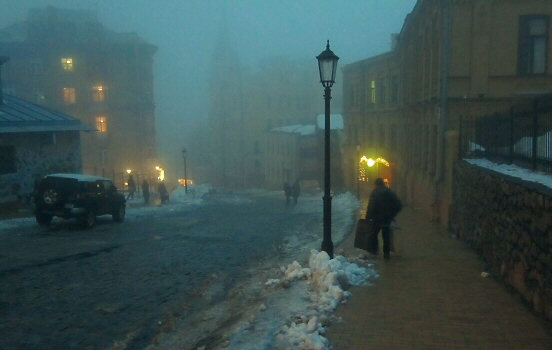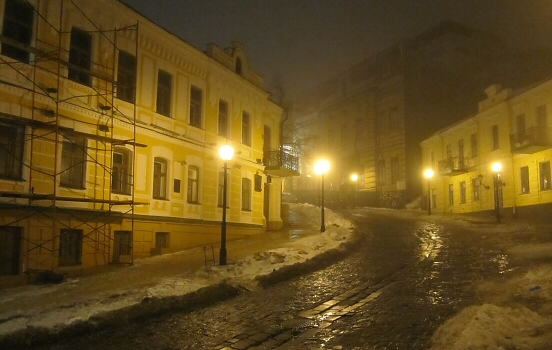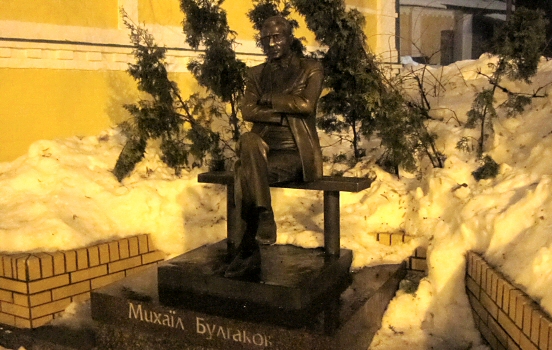It was a misty night in Kiev. I left the large Sophia Square, where the golden domes of Saint Sophia Cathedral and Saint Michael’s Cathedral normally are visible. But even the imposing cathedrals were lost to the nothingness of the mist, so I chose another path and descended the Andriyivskyy Descent.
Andriyivskyy Descent is a historic street in the capital of Ukraine, winding its way from upper town along 720 meters of worn cobblestone down to the Podil area by the harbor. In summertime the street is bustling with people and vendor booths, but tonight there are only a few scattered shadows in the darkness.
 Walking down Andriyivskyy Descent.
Walking down Andriyivskyy Descent.
One of the first things one see during the descent is Saint Andrew’s Church. The beautiful green cupolas topped with gold are seen from a great distance. Except for tonight, when I barely can see my own shoes. The church was initiated by the Russian Tsaress Elizabeth Petrovna, laying the first brick in the 1750s.
Walked past the sitting statue of poet Taras Shevchenko before arriving at the so called Castle of Richard Lionheart. It’s a strange name since the Neo-Gothic style building has nothing to do with the English king, but was given the name by writer Viktor Nekrasov for its resemblance to medieval knightly castles.
 House of Mikhail Bulgakov on Andriyivskyy Descent.
House of Mikhail Bulgakov on Andriyivskyy Descent.
A bit further down the street is the address 13 Andriyivskyy Descent, also known as the Bulgakov House. The writer Mikhail Bulgakov lived in this house for a while and described the area in his novel The White Guard from 1925. There is a statue of the famous author sitting on a bench next to the house.
 Statue of Mikhail Bulgakov on Andriyivskyy Descent.
Statue of Mikhail Bulgakov on Andriyivskyy Descent.
The street finally flattens out in the Podil area. Time to get out of the cold and have a pint of Obolon, the pale thing brewed in northern Kiev.

Comments
No comments yet.
Leave a reply